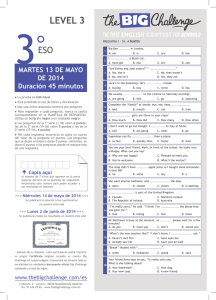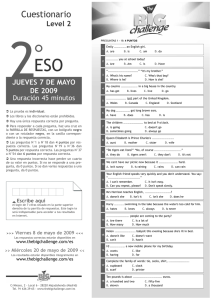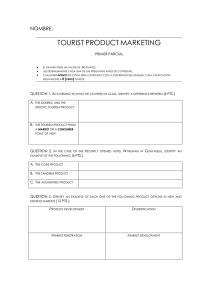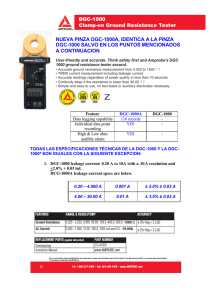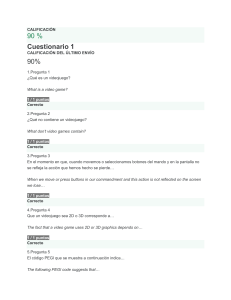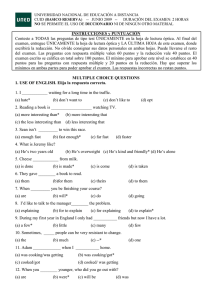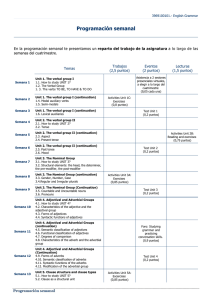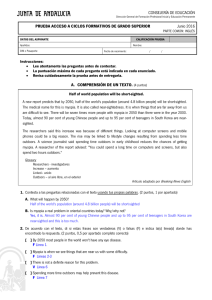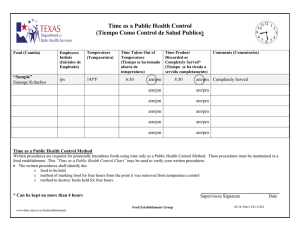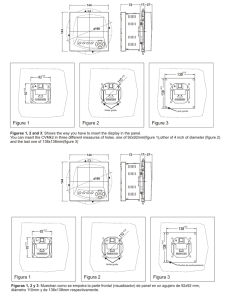Day-to-day meteorological variability in northern Chile: impacts and
Anuncio
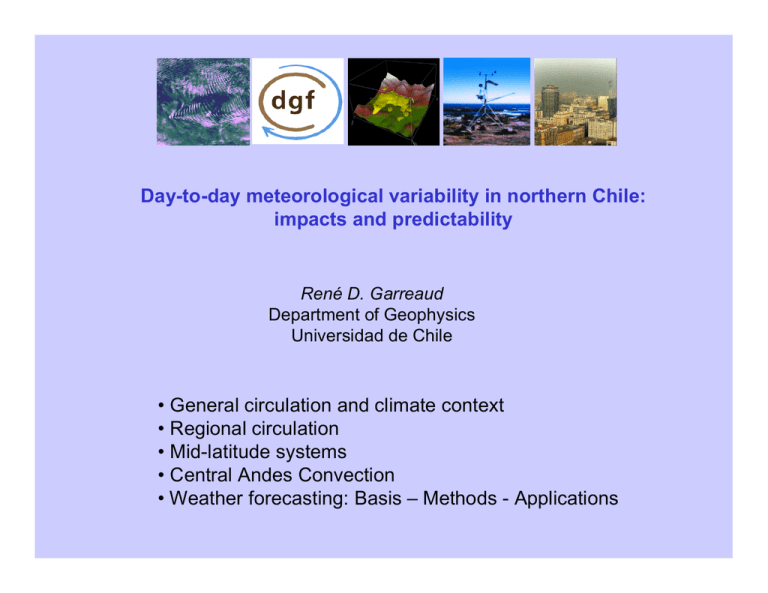
Day-to-day meteorological variability in northern Chile: impacts and predictability René D. Garreaud Department of Geophysics Universidad de Chile • General circulation and climate context • Regional circulation • Mid-latitude systems • Central Andes Convection • Weather forecasting: Basis – Methods - Applications Circulación media de gran escala ZCIT ecuador B A B 33S B In the context of weather and climate phenomena atmosphere ≈ continuum fluid Basic equations r v v dV 1 + fkˆ × V = − ∇p − FR + gv dt ρ ∂ v ( + V ⋅ ∇)T − S ω = Q ∂t P RAD v ∂ω ∇ ⋅V + =0 ∂p ∂ ( gz ) RT =− ∂p p +Q Conv +Q Sfc But ... • Previous system is highly non-linear and implicit; no analytic solution can be obtained • Some physical processes are difficult to model (cloud formation, radioactive transfer, surface exchange, etc.) .... Numerical modeling •Use regular grids (vertical coordinate) •Finite differences in space and time (vs. Spectral models) •Parameterization of sub-grid processes • Regional versus Global modeling Horizontal domain Horizontal grid spacing Horizontal grid type Vertical resolution below 800 hPa Integration times Spin-up time Lead applications Physical parametrizations Initialization (IC) Regional Global 1000 × 1000 km2 108 km2 5-50 km 200-500 km Regular grid point Spectral (T45 / R63) 10-15 4-9 (5 in CCM3) Days to weeks (year?) Season to decades Few hours Few years NWP – Diagnosis of weather events Climate studies, seasonal prediction Several options Single option Analysis Cold start Lateral Boundary Conditions (LBC) Analysis, Forecast Bottom Boundary Conditions (BBC) Fixed / Coupled Coupled with ocean or land Regional atmospheric modeling: Current status Regional atmospheric modeling is currently being performed in many groups at Universities, State Agencies and Private companies, in part because: • Availability of modestly priced single and multiprocessor workstations that provide "supercomputer" processing capabilities • Availability of regional (synoptic-mesoscale) models that run efficiently on workstations, sometimes as a black box (MM5, RAMS) • Real-time accessibility of analysis and forecast grids from operational, global models (MRF-NCEP, ETA-CPTEC, etc.) a. Met. variable (Taire, R, etc.) b.Seeing (T≈1 día) Nowcast Weather forecast c. River runoff (T≈1 semana) Weather forecast Extended forecast Initial conditions d. Tomato growth (T≈2 mes) Climate prediction Initial conditions Time (2 months) 3 days Vis Vapor de Agua IR(lejano) IR (cercano) D1 MM5-DGF (2002) D2 D3 met.dfg.uchile.cl/tiempo/MM5 Detalles de la corrida D1: 135 x 135 (km) - 34 x 40 x 30 puntos D2: 45x45 (km) - 55 x 55 x 30 puntos D3: 15 x 15 (km) - 73 x 73 x 30 puntos Inicialización: Un ciclo 0000 UTC (2000 HL) cada día Periodo de simulación: 72 horas Intervalo de salida: 1 hora Condiciones de borde e iniciales: NCEP-NOAA (USA) Mapas sinópticos Series de Tiempo Cortes tiempo-altura
